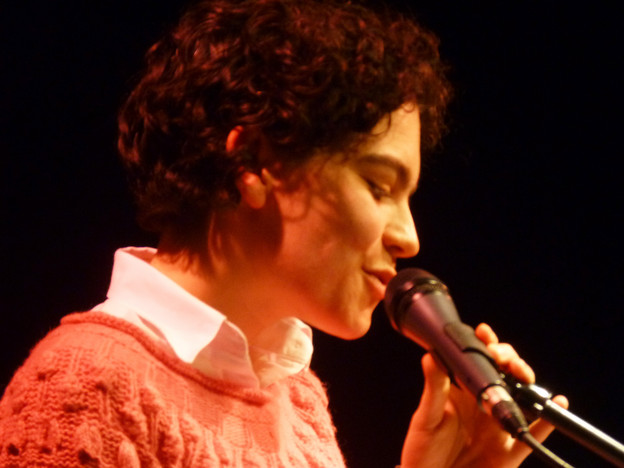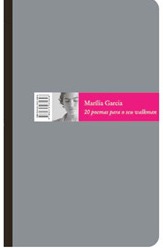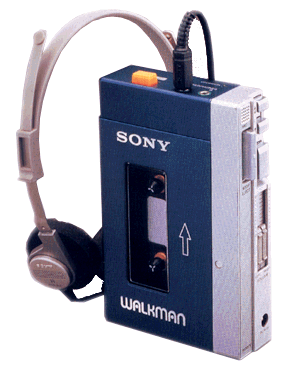Poetic sound work IV
Obra sonora poética, Parte IV

This is Part IV of a four-part essay that appears in Portuguese in Deslocamentos Críticos (Lisbon: Babel; São Paulo, Itaú Cultural, 2011) under the title "Obra Sonora Poética: 1980-2010." Read Parts I, II, and III.
Brazilian Poetic Sound Work: 1980-2010
IV.
In the twenty-first century, Ricardo Aleixo and younger Brazilian poets are joining veteran vanguardists such as Augusto de Campos as global players in cross-platform writing. But in the last decade, young innovative poets also have been creating a stylistic register that does not feature the prominent, material use of sound that appears to epitomize this century. Instead, they write lyric poems that are sufficiently skeptical of the mode. These poems paint descriptive, imagistic scenes with emotional resonance, and irony. They dialogue with an international roster of inspirational places and poetic predecessors, and at times fight with them. They shamelessly mull over language and the mundane. They are dystopian, but rooted in place and local light. In these ambient poems, sound comes to be important as tone.
These poets’ choices resonate with the recent observations of Laura Moriarty in A Tonalist (2010). For Moriarty, “Tone suggests musicality and can also relate to accent, emphasis, force, inflection, intonation, resonance and a range of color terms such as hue, shade, tinge, tint and value” (128). She perceives these features in twenty-first century California poetry, along with some looks askance. “Some people write lyric poetry because they just want to and think it is great. Some write it though they think it is impossible. The latter are A Tonalists,” Moriarty wryly observes (121). The feeling crosses continents. For young Brazilian poets on the pulse of global poetics, and grappling with the challenges to lyric in Brazilian literary history, doing the impossible is right at home.
Like Aleixo, p oets such as Marília Garcia (b. 1979) share a commitment to innovation, dialogue, and international sources. They also ask creative, social, and political questions, albeit through different means and styles. Freedom in this tonal and atonal work turns up as a consequence of being “post-everything” in the twenty-first century. It is a prospect at once freeing and frightening.
oets such as Marília Garcia (b. 1979) share a commitment to innovation, dialogue, and international sources. They also ask creative, social, and political questions, albeit through different means and styles. Freedom in this tonal and atonal work turns up as a consequence of being “post-everything” in the twenty-first century. It is a prospect at once freeing and frightening.
Sound is thus swallowed into perception and self-location. Garcia’s 20 poemas para o seu walkman (2007) digests the external sonic device and the modernist past (the title plays on Oliverio Girondo’s Veinte poemas para ser leídos en el tranvía) into an amusing, internally contemplative title poem. A representative sample from “20 poemas para o seu walkman”:
só ligava para contar do emprego
de matemática – “quase um objeto
poroso” – sair para um concerto de rock
e preparar variações para uma
vegetariana amável que pinta
de branco o apartamento
antes de ir.
[just called to talk about a job
in mathematics—“almost a porous
object”—to go out to a rock concert
and prepare variations for a
sweet vegetarian who paints
the apartment white
before leaving.]
The short passage considers multiple forms of listening—the telephone, the rock concert, in addition to the suggestive, anachronistic title. The Walkman is a relic at this point in time, but the book conscientiously dialogues with the idea that in our present day, we often listen before we read. The poem replays that impulse as a choice, and chooses to stay in a book.
The poet also intended the title in the literal sense of a man walking (Personal interview). She imagined the poems accompanying a reader on a walk, playing in a reader’s head as they navigated the streets. She wanted the poems to get under a reader’s skin, and in their ears. The poems are meant to be heard.
Aleixo’s work offers new voices to the poetic conversation, and opens up essential space for participation and connection. The poems of Garcia add to that new ways of listening, now.
I thank Rumos Literatura do Itaú Cultural for supporting this research.
Works Cited in Part IV
Garcia, Marília. 20 poemas para o seu walkman. São Paulo: Cosac Naify; Rio de Janeiro: 7Letras, 2007.
---. Personal interview. 5 Aug. 2011.
Moriarty, Laura. A Tonalist. Callicoon, NY: Nightboat Books, 2010.
Works Cited for the complete essay
Aleixo, Ricardo. “Arquivox: práticas vocais nas poéticas contemporâneas.” 38º Festival de Inverno da UFMG. Universidade Federal de Minas Gerais, July 2006. Web. 14 May 2007.
---. Boca também toca tambor. Galeria Municipal de Arte, Itajaí, Santa Catarina, Brazil. 9 Aug. 2010. akavulgo’s Channel. Ricardo Aleixo. YouTube, 30 Aug. 2010. Web. 8 Aug. 2011.
---. Modelos vivos. Belo Horizonte: Crisálida, 2010. Print.
---. “Música para modelos vivos movidos a moedas.” Jaguadarte – Posse de Ricardo Aleixo. Blogspot, 13 July 2010. Web. 23 Aug. 2011.
Bessa, Antonio Sergio. “Sound as Subject: Augusto de Campos’s Poetamenos.” Perloff and Dworkin 219-236.
Campos, Haroldo de. “Da razão antropofágica: Europa sob o signo da devoração.” Colóquio 62 (1981): 10-25. Print.
Daniel, Claudio. “Geração 90: uma pluralidade de poéticas possíveis.” Protocolos críticos. Adelaide Calhman de Miranda, et al. São Paulo: Iluminuras; Itaú Cultural, 2008. 89-103. Print.
Feinsod, Harris. “Sound Poetry.” The Princeton Encyclopedia of Poetry and Poetics. 4th ed. Princeton, NJ: Princeton UP, forthcoming 2012. Print.
Garcia, Marília. 20 poemas para o seu walkman. São Paulo: Cosac Naify; Rio de Janeiro: 7Letras, 2007. Print.
---. Personal interview. 5 Aug. 2011.
Gullar, Ferreira. Entrevista de Ferreira Gullar por Weydson Barros Leal [12 July 1999]. Jornal de Poesia. Ed. Soares Feitosa. Jornal de Poesia, 8 Sept. 2005. Web. 2 Aug. 2011.
---. Toda poesia (1950-1999). 17th ed. Rio de Janeiro: José Olympio, 2008. Print.
Higgins, Dick. “Dick Higgins: A Taxonomy of Sound Poetry.” Poems and Poetics. Ed. Jerome Rothenberg. Blogspot, 25 July 2011. Web. 31 July 2011.
Menezes, Philadelpho, cur. Exposição—poesia intersignos [1998]. Pontifícia Universidade Católica de São Paulo, 16 July 2002. Web. 17 Aug. 2011.
---. Poesia Intersignos: do impresso ao sonoro e ao digital [1998]. Pontifícia Universidade Católica de São Paulo, 30 June 1999. Web. 17 Aug. 2011.
---, ed. Poesia Sonora: poéticas experimentais da voz no século XX. São Paulo: Editora EDUC, 1992. Itaú Cultural—Arte e Tecnologia—salas especiais—Poesia Sonora. Web. 17 Aug. 2011.
---. Roteiro de Leitura: poesia concreta e visual. São Paulo: Editora Ática, 1998. Print.
Moriarty, Laura. A Tonalist. Callicoon, NY: Nightboat Books, 2010. Print.
Pereira, Edimilson de Almeida, ed. Um tigre na floresta de signos: estudos sobre poesia e demandas sociais no Brasil. Belo Horizonte: Mazza Edições, 2010. Print.
Perloff, Marjorie. Prefatory note. “The Oulipo Factor: The Procedural Poetics of Christian Bök and Caroline Bergvall.” Jacket 23 (Aug 2003): n. pag. Web. 11 Aug. 2011.
---, and Craig Dworkin, eds. The Sound of Poetry/The Poetry of Sound. Chicago: U of Chicago P, 2009. Print.
Perrone, Charles A. Brazil, Lyric, and the Americas. Gainesville: UP of Florida, 2010. Print.
---. Seven Faces: Brazilian Poetry Since Modernism. Durham: Duke UP, 1996. Print.
Reed, Brian M. “Visual Experiment and Oral Performance.” Perloff and Dworkin 270-284.
Stewart, Susan. “Rhyme and Freedom.” Perloff and Dworkin 29-48.
Tosin, Giuliano. “Poesia Sonora no Brasil e no Mundo / Sound Poetry in Brazil and the World.” Intellectus 2.2 (Jan/Jul 2004): 19-33. Web. 23 Aug. 2011.
Brazilian poetry and poetics